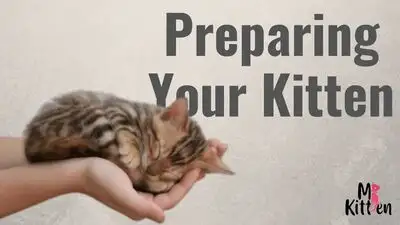Introducing Your Kitten to Other Pets/Dogs: A Step-by-Step Guide
Why the First Introduction Matters?
As a cat behaviorist, I often get asked about introducing a new kitten to other pets whether it’s a dog, another cat, or even smaller animals like birds or rabbits. It can feel a little overwhelming at first, but with the right preparation and a bit of patience, it can turn into a smooth and rewarding experience for everyone involved.
In this article, we’ll walk you through everything you need to know from getting your kitten ready, to making that first introduction, and helping them settle in afterward.
Preparing Your Kitten for a Smooth Introduction
Health First — Vaccinations and Spay/Neuter
Before you buy a kitten and bring your kitten home, make sure they’re up to date on vaccinations and have been spayed or neutered. This not only protects their health but also helps prevent aggressive or territorial behavior when meeting other pets. Take things slow let your kitten get comfortable being handled and give them time to adjust to their new environment before any introductions. A calm, confident kitten is much more likely to have a positive experience when meeting other animals.

Preparing Other Pets in Your Home
Create a Structured and Calm Environment
If you already have pets at home, it’s just as important to prepare them for the new kitten’s arrival. Start by creating a calm clean and structured environment. Feeding them in separate rooms helps prevent food related tension between them and establish boundaries. To ease the transition begin scent swapping before a week or two the kitten arrives. This subtle introduction to the kitten’s smell helps your existing pets to become more comfortable to the kitten when the actual meeting happens.
The First Introduction: Keep It Calm and Controlled
Supervised Short Sessions with Rewards
When it’s time for your kitten to meet the rest of the crew, it’s important to make sure that it goes on in a controlled environment preferably a neutral space where no pet feels like their territory is being invaded. Place your kitten is a carrier and watch their body language closely. Curiosity is good, but signs of stress or aggression mean it’s time to slow things down.
If things go smoothly, you can gradually allow for short, supervised interactions keeping the sessions brief and positive. Offer treats and praise to reinforce calm behavior and always be ready to step in if tensions rise. Repeat this process multiple times and gradually increasing the amount of time the two pets spend together.

Integrating Your Kitten into Your Home
Start with One Room at a Time
Once the introductions are out of the way, it’s time to help your kitten settle into daily life. Start small by letting them explore one room at a time while supervising their interactions with other pets. This gives your kitten a chance to build confidence without feeling overwhelmed.
As they grow more comfortable, you can slowly expand their access to other areas of the house making sure to supervise them until you’re confident that everyone’s getting along.

Establishing a Routine for all Pets
Feeding, Playtime, and Rest Schedules
A consistent routine goes a long way in helping your kitten and your other pets feel safe and settled. Make sure to provide plenty of food, water, toys, and litter boxes in separate locations to minimize competition. Try feeding your pets at the same time each day and keep playtime and rest on a regular schedule. A predictable routine makes everyone feel more secure and reduces stress.
Regular grooming sessions can also help reinforce the bond between your pets and maintain a sense of calm and security. Everyday habits may seem simple yet goes a long way in creating a calm and balanced environment for the pets

Troubleshooting: When Things Don’t Go Smoothly
Handling Behavior Issues
Even with the best preparation, some bumps in the road are completely normal. Common issues being food guarding, territorial behavior, or litter box mishaps during the adjustment period. In these situations, it’s important to stay calm and seek the advice of a professional cat behaviorist. With the right training and behavior modification techniques, most issues can be resolved and the pets can coexist peacefully.
In conclusion, introducing your kitten to other pets can be a challenging process, but with the right prep, a solid routine, and a good understanding of feline behavior, it can become a smooth and rewarding journey.


